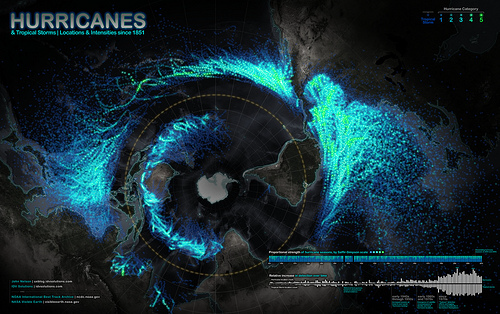Not so much a map as a projection and a statement that caused considerable cartographic debate in the years following its publication. Here, the world map version shows the projection that Peters created (or reincarnated given the Gall orthographic from the late 19th century) which Arthur Robinson claimed resembled “wet, ragged long winter underwear hung out to dry in the Arctic Circle”. Perhaps not aesthetically pleasing, the map is well designed in other ways.
The map is included here more for what it represents in the sense that its unique re-shaping of the world and the value in challenging the bias of other projections which gave mapping an alternative. It raised public consciousness of cartography and was used by many development agencies due to the way it presented Africa and promoted the equal-area projection for thematic maps in particular.
The projection is now rarely used and the rise of Web Mercator has meant that many good projections are marginalised in favour of ease of use. Peters, then, represents the single-minded approach to cartography when all around are following the herd. Mapping can be more than conforming, it can be a place to explore, innovate, resurrect and challenge. Designing good quality map-based information graphics requires good cartographic knowledge. Peters attempts to highlight inequalities inherent in other projections were a jarring information graphic of the time.



